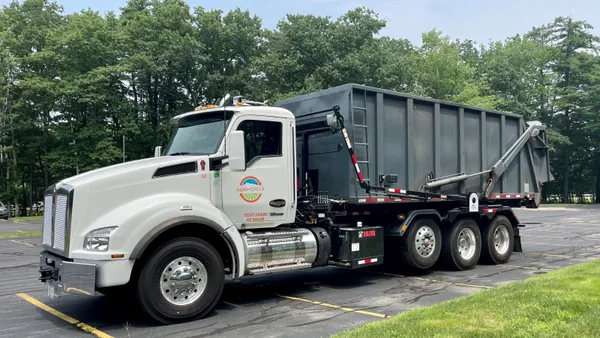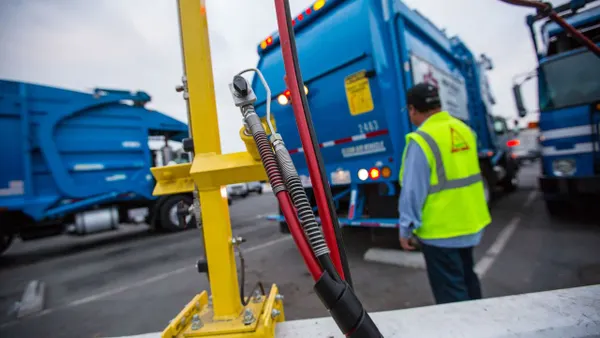Dive Brief:
-
Nearly half of U.S. consumers would pay more to dine at restaurants with food recovery programs, while 72% care how businesses handle food waste. Yet restaurants toss 85% of unused food rather than donating or recycling it, according to research from Chefhero and goMkt, an app that lets NYC-based retailers sell off excess or day-old food at a discount.
-
Annual food waste exceeds 130 billion pounds and an individual restaurant can produce up to 75,000 pounds of food waste in only one year, totaling more than $160 billion at the retail and consumer level, according to the USDA. Businesses could save $8 for every dollar invested in reducing waste — which could give the restaurant industry an additional $2 billion per year in potential profits.
-
Though 41% of restaurants claim liability and transportation constraints keep them from recycling or repurposing food waste, the Bill Emerson Good Samaritan Food Donation Act protects donors in many cases.
Dive Insight:
Anywhere from 30% to 40% of the U.S. food supply goes to waste, according to the USDA, and most of it finds a home in landfills. Food waste at the retail and consumer levels were 31% of the food supply in 2010, according to Chefhero and goMkt report.
Aside from the physical toll of the waste itself, every scrap tossed in the trash represents money lost for the restaurant and the consumer. For every $1 consumers spend on food outside the home, 3 cents ends up in the trash; the average family of four tosses $1,600 worth of food every year. Meanwhile, 1 in 8 Americans struggle with hunger. Thus the reasons for minimizing food waste answer calls for equity, fiscal responsibility and sustainability.
Plenty of chefs have endeavored to change that reality, but it’s easier said than done. Chef Dan Barber, for example, has created his own ecosystem for his farm restaurant outside of New York City. A manager at one of the Netherlands’ largest grocery stores, Albert Heijn, started a restaurant that only uses food scraps after realizing how much his own employer wasted. Panera, of course, has long championed donating leftovers with its Day-End Dough-Nation program, as has Pret A Manger.
The issue has touched every level of the supply chain, and efforts to negate the pervasive problem seem to necessitate collaboration. In 2011, for example, the National Restaurant Association, Food Marketing Institute and the Grocery Manufacturers Association joined forces to form the The Food Waste Alliance, a national initiative to reduce food waste, boost the amount of nutritious food donations and recycle “unavoidable” food waste.
These programs and efforts at the local, state and federal level aim to divert food waste from landfills while simultaneously feeding those in need. Companies like Conagra, Kroger, Safeway and Tyson have committed to the program alongside a few chain restaurants including Yum Brands.
According to Chefhero and goMkt, restaurants can take small steps to reduce waste. Restaurants can help by cutting portion sizes, building a compost bin and buying “ugly” fruits and vegetables overlooked by retailers. The research also suggests partnering with programs that turn bio-waste into fuel. Just as consumers will pay more for sustainable packaging, they’re likely to push businesses to be increasingly proactive in reducing food waste where it starts — in the field, in the kitchen or on the grocery shelf.










